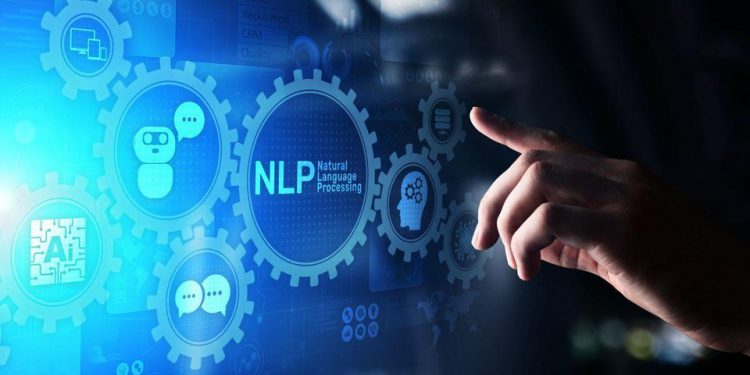Communicating with people comes quite naturally to human beings. The language that we learn during childhood makes us capable of making others understand what we say. But what if we have to interact with a machine? For decades, we have used programming languages to communicate with a computer and command it to perform certain actions. All this while, we have used text to write codes and converted them to a binary format that a machine understands. Is it possible to talk to machines just like we do with humans? Well, you would instantly think of voice assistants like Alexa, Cortona, or Siri.
Voice assistants are a sophisticated example of machines understanding human commands and performing tasks accordingly. Technically speaking, voice assistants use a component of Artificial Intelligence (AI) called Natural Language Processing (NLP) to comprehend human language. Artificial Intelligence has already created a buzz all over the world. Many fascinating AI-powered applications are being introduced in the market and have impressed the general public. Apart from voice assistants, you may have seen driverless cars, drones, chatbots, search algorithms, and recommendation engines of Netflix or Amazon. All these use powerful machine learning algorithms to perform human-like functions.
With greater penetration of AI in virtually every industry, the demand for skilled AI professionals has increased considerably over the years. Corporates, as well as eLearning providers, are keen on offering AI courses like Artificial Intelligence and Machine Learning PGP programs to help aspirants upskill and gain expertise in this field.
This article, however, focuses on Natural Language Processing and gives you a complete overview of it.
An Introduction to NLP
Natural language processing basically refers to the process of automatic manipulation of human language by a tool or software. It aims to build machines that can respond to text or voice input data and generates output in the form of text or speech of their own. NLP is a crucial branch of AI that combines computational linguistics rule-based human language modeling using statistical, machine learning, and deep learning models.
It is important to note that human language is very tricky, and people express themselves in infinite ways. Human tone, regional dialects, selection of words, sarcasm, metaphors, and exceptions make natural language quite ambiguous. It can be extremely complex to comprehend and manipulate language effectively. Thanks to the advancements in areas like big data, increased computational power, and machine learning, machines are now made capable of automatically handling natural language. Companies are now using NLP to achieve meaningful results not only in the information technology sector but also in healthcare, media, finance, human resources, and more.
How NLP Works
Firstly, machines need to be trained regarding important traditional linguistic fields like morphology, syntax, semantics, pragmatics, and phonology. Among these, syntax and semantic analysis are the primary techniques used with natural language processing. Here, syntax refers to the arrangement of words in a sentence to make grammatical sense. In morphology, the function of individual words is defined. Then grammatical tagging is done, i.e., identifying the part of speech of a specific word based on its use and context.
Knowledge thus derived from the syntax is used to know the structure of a sentence. Removal of ambiguity is then performed through semantic analysis. A particular word may have multiple meanings, and semantic analysis helps a machine understand which meaning is most appropriate in the said context. Co-reference resolution is also performed to check if any two words refer to the same entity. To sum up, machines have to process large data sets on individual cases to get used to the natural language.
Also Read: NLP Interview Questions and Answers
Where is NLP Used?
Common people may not remember a technology and how it works wonders, but what grabs their attention is an advanced product that makes their tasks easier. Similarly, one may not know what NLP actually is, but they know the applications powered by it like smart speakers. Some of the other areas where NLP is proving to be quite beneficial are mentioned below.
- Auto-correct feature – Whether you are typing on a messenger or word document, today spellcheck algorithms can automatically correct any errors using NLP.
- Language translator – Google Lens allows you to just point the camera to a piece of text and it will translate into a language of your choice, be it Hindi, German, French, or English.
- Filtering of spam mails – NLP’s text classification abilities are used to scan emails for language that may indicate phishing or spam, like overuse of financial terms.
- Sentiment analysis in social media – NLP is being used as an effective business tool to identify hidden trends from social media channels. This can help in advertising campaigns, product improvement, and better customer service.
- Chatbots – Chatbots are being used by banks and other institutes to respond to basic queries of a customer and ensure they get a smooth experience. Quicker response saves the customer from the frustration of waiting to connect with the representative.
There are so many applications coming up that utilize NLP. So, if you are planning to start a career in AI, then learning NLP can highlight your resume in front of employers. You’ll find a range of AI online courses that cover NLP. Taking one such course will help you grasp the nuances of AI as well as NLP.


